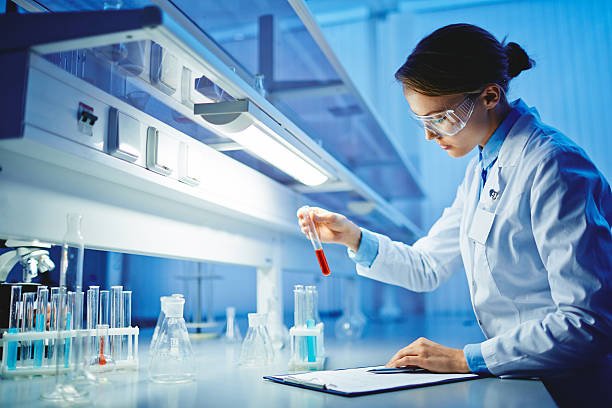Table of Contents
What exactly is Biotechnology?
Biotechnology is the use of biological systems, living organisms, or their constituent parts to create new products, processes, and technologies. Biotechnology attempts to improve human health, societal well-being, and environmental health by leveraging cellular and biomolecular processes.

This discipline, also known as biotechnology, has ancient roots extending back to the domestication of plants and animals, as well as the discovery of fermentation. It enables the transformation of foods, the treatment of water, the development of sustainable materials, and the creation of vaccines.
Historical Background
The term “Biotechnology” was introduced in 1919 by agronomist engineer Károly Ereki, who saw the potential of using biology to transform raw materials into useful products. Biotechnology has been part of human life for centuries, with early applications seen in the making of bread, wine, and beer, all of which involve fermentation.
Since the dawn of civilization, humans have employed biotechnology in various forms. Ancient Egyptians used yeast for leavened bread, Chinese civilizations developed fermentation techniques for brewing and cheese making, and Aztecs used Spirulina algae in their cakes.
Pre-1800 developments in biotechnology were primarily based on natural observations aimed at improving human life. Essential needs such as food, clothing, and shelter drove innovations like agriculture, which involved growing crops near shelters and domesticating animals to ensure a steady food supply. Early methods for food preservation included using cold caves and clay jars. Key biotechnological advancements included cheese production using rennet and yeast’s role in bread making, vinegar production, and alcoholic beverages. Crossbreeding, such as creating mules from donkeys and horses, exemplified early genetic manipulation for practical benefits..
Classical and Modern Biotechnology
The following table shows the key developments of Classical and modern Biotechnology during different time periods and key contributions of scientists in the Scientific Developments.
| Phase | Period | Key Developments | Significant Figures and Contributions |
| Classical Biotechnology | 1800 – mid-20th century | Foundational observations and discoveries. Development of genetic information transfer basics. Advances in molecular biology and genetics. Creation of vaccines and antibiotics. | Gregor Mendel: Formulated Laws of Inheritance. Robert Brown: Discovered the nucleus. Fredrich Miescher: Identified nuclein. Robert Koch: Introduced solid media for bacterial cultures. Walter Hesse: Discovered agar. Heinrich Wilhelm Gottfried von Waldeyer-Hartz: Coined the term ‘Chromosome’. Edward Jenner: Developed Smallpox vaccine Louis Pasteur: Developed Rabies vaccine Wilhelm Johannsen: Coined ‘gene’, ‘genotype’, and ‘phenotype’ T.H. Morgan: Advanced the theory of genes and chromosomes Alexander Fleming: Discovered Penicillin |
| Modern Biotechnology | Post-World War II | Structural model of DNA Development of monoclonal antibodies DNA synthesis and amplification Cloning of adult animals Human genome sequencing Creation of synthetic genomes | JD Watson & FHC Crick: Proposed the double Helix model of DNA. Jacob & Monod: Concept of Operon Kohler & Milstein: Developed monoclonal antibodies Dr. Hargobind Khorana: Synthesized DNA Karl Mullis: Developed DNA amplification (PCR) Ian Wilmut: Cloned sheep (‘Dolly’) Craig Venter: Sequenced the human genome and demonstrated synthetic genome replication |
Biotechnology and different Domains
Biotechnology is a vast field and contains several type of Sub Fields, Each of these fields have their own importance and Applications. These subfileds are explained as following
Plant Biotechnology
Plant biotechnology encompasses a range of advanced techniques aimed at enhancing plants to meet specific needs, such as sustainable food production, environmental protection, and economic opportunities. This field employs methods like genetics, genomics, marker-assisted selection, and genetic engineering to develop plants with improved traits, such as disease resistance, higher yields, and better quality.

Despite its successes, including the development of disease-resistant crops and the production of useful proteins, plant biotechnology faces challenges. These include concerns about potential health risks, environmental impacts, and ethical issues related to the monopolization of genetic resources. Additionally, food safety concerns and the risk of bioterrorism highlight the need for stringent regulations and precautions in the use of genetically modified organisms.
Medical Biotechnology
Medical biotechnology utilizes biotechnology tools to create products for diagnosing, preventing, and treating diseases. Notable examples include antibiotics and human insulin, produced using recombinant DNA technology. Recent advancements since 2000, such as stem cell therapy and tissue engineering, have revolutionized the field, with numerous clinical trials and approved treatments now available.

Medical biotechnology continues to make significant strides, including genetic testing, drug treatments, and artificial tissue growth, although it faces challenges related to funding, ethics, and regulation. From cancer research to agriculture advancements, medical biotechnology has many promising avenues of technological growth that have the potential to help many people
Industrial Biotechnology
Industrial biotechnology harnesses bio-based raw materials to produce chemicals, materials, food, beverages, biofuels, and biodrugs. This eco-friendly approach reduces environmental impact by substituting biomass for fossil resources, cutting emissions, conserving water and energy, and generating less waste. By advancing fermentation techniques, bioreactor design, and genetic engineering, industrial biotechnology offers cost-effective, sustainable products that significantly benefit the industry.

The sector boosts rural economies by creating new agricultural markets and biorefineries. Technological advancements and consumer demand are driving industrial biotechnology forward, especially for biobased materials. The field promises sustainable economic growth, innovative manufacturing, and new job opportunities, contributing to global and national solutions for clean energy and sustainable development.
NanoBiotechnology
Nanobiotechnology is a field that utilizes nanoscale principles and techniques to study and modify biological systems, both living and non-living. It also employs biological principles and materials to develop new devices and systems at the nanoscale.

Metal nanoparticles play a critical role in combating fungal diseases in both humans and plants. Filamentous fungi and yeasts, in particular, offer significant potential in nanotechnology due to their ability to synthesize nanoparticles with controlled shape and size, which are useful for therapeutic applications against severe fungal infections. Fungi are advantageous in green synthesis due to their availability, ease of cultivation, and high production of reducing enzymes. This symbiotic relationship between nanotechnology and mycology makes nanobiotechnology an attractive area for research and industrial applications, promising expanded uses in medicine and agriculture.
Key applications of Nano-Biotechnology include:
- Advanced molecular imaging techniques for early disease diagnosis and therapy evaluation.
- Quantitative analytical tools to study cellular mechanisms at the molecular level.
- Physical models of cells to better understand and target disease mechanisms.
- Enhanced ex vivo and laboratory techniques.
- Improved drug delivery systems.
Nanotechnology, focusing on nano-sized materials like nanoparticles, nanotubes, and nanowires, offers advantages such as high stability, target selectivity, and plasticity. Both biotic (e.g., virus capsids) and abiotic (e.g., carbon, silver, gold) materials are used in synthesizing nanomaterials.
Nanobiotechnology, combining nanotechnology and biotechnology, aims to enhance traditional biotechnological methods and mitigate their limitations. It has significantly improved various techniques, including drug delivery, environmental remediation, and enzymatic processes, with major applications in medical, industrial, agricultural, and environmental fields.
Marine Biotechnology
Marine biotechnology involves utilizing marine organisms to develop products and processes through biotechnology, molecular and cell biology, and bioinformatics.
This field focuses on ocean exploration to create new pharmaceuticals, chemical products, enzymes, and other innovations.

Significant applications include advancing aquaculture and seafood safety, bioremediation, and biofuels. For instance, recombinant DNA technology aids fish reproduction, genetic engineering improves fish nutrition, and vaccines protect against diseases. Additionally, marine-derived compounds have led to the development of several commercialized medicines, with many more in clinical trials, highlighting the ocean’s vast potential for pharmaceutical discoveries.
The environmental and biofuel sectors also benefit from marine biotechnology. Marine microorganisms exhibit unique biodegradation pathways, breaking down pollutants and producing eco-friendly chemicals for waste management. Microalgae are explored as a viable biofuel source due to their high oil content and easy cultivation. The continued research in marine biotechnology is vital to tapping into the marine ecosystem’s rich biodiversity, providing solutions for health, environmental sustainability, and energy needs.
Food Biotechnology
Food biotechnology employs microorganisms to preserve food and produce value-added products such as enzymes, flavor compounds, vitamins, microbial cultures, and food ingredients. This field focuses on selecting and manipulating microorganisms to improve process control, product quality, safety, consistency, yield, and efficiency.
To meet future stakeholder expectations in post-harvest management and food processing, establishing a dedicated Food Biotechnology Department is essential. Additionally, recombinant gene technology and genetically modified (GM) microbes/foods contribute to sustainable food and nutrition development. Biotechnology is also crucial for diagnostics to monitor food safety, prevent food-borne illnesses, and verify food origins.

Food biotechnology involves modifying the genes of animals, plants, and microorganisms to create new species with desirable nutritional, production, and marketing properties. This technology has significantly improved both the quantity and quality of our food supply, enhancing essential nutrients in everyday diets. By utilizing scientific knowledge and genetic techniques, biotechnology makes food production more efficient, cost-effective, longer-lasting, disease-resistant, and nutritious. The tools of food biotechnology range from traditional breeding methods to advanced genetic modifications, enabling the transfer of desirable traits between species to improve plant and animal food sources.
Environmental Biotechnology
Environmental biotechnology applies biotechnology principles to address environmental challenges, leveraging biological processes for environmental protection and restoration. This field utilizes microorganisms and other biological agents to manage and improve the natural environment.
Key applications include pollution removal, genetic rescue of species, renewable energy generation, and biomass production. Techniques involve using bacteria to break down pollutants in water and soil, algae to absorb excess nutrients from wastewater, and fungi to decompose organic matter in landfills.

Environmental biotechnology is pivotal for developing sustainable solutions to environmental issues. It focuses on enhancing soil health, reducing greenhouse gas emissions, and cleaning contaminated sites. This area of active research and development offers ecological, economic, and global benefits, advancing our understanding of the interplay between living and non-living environmental factors. Through innovative methods and real-life applications, environmental biotechnology paves the way for a sustainable future by addressing critical issues in pollution management and advanced agriculture.
Animal Biotechnology
Animal biotechnology involves using molecular biology techniques to genetically modify animals to enhance their agricultural, industrial, or pharmaceutical suitability. This branch of biotechnology has produced genetically modified animals that can synthesize therapeutic proteins, exhibit improved growth rates, and show resistance to diseases.
Advances in this field have been driven by progress in sequencing animal genomes, gene expression, and metabolic profiling. Recent developments in genome editing technologies, such as Zinc Finger Nucleases, TALENs, and CRISPR-Cas systems, have opened new avenues for creating genetic variations in animals, improving their health, agricultural productivity, and disease resistance.

The impact of animal biotechnology is significant, particularly in agriculture and medicine. The production of genetically engineered animals is poised to meet the growing demand for high-quality meat and fish products, driven by rising global population and improved living standards. Transgenic animals are also being developed for pharmaceutical production, as potential sources of human replacement organs, and as models for human disease. However, the adoption of these technologies raises concerns about food safety, environmental impact, and animal welfare. Addressing these concerns is crucial as the integration of biotechnology into agricultural and biomedical practices progresses.
Microbial Biotechnology
Microbial biotechnology utilizes microorganisms to produce bioactive products such as antibiotics, antifungals, anticancer drugs, antivirals, immunosuppressants, toxoid vaccines, and therapeutic enzymes.
It has also provided essential genetic tools like CRISPR-Cas Systems and thermostable DNA polymerase enzymes, which are crucial for genetic engineering. This interplay between microbial biotechnology and genetic engineering has led to significant advancements in both fields. Microbial biotechnology’s contributions extend beyond fermentation and antibiotic synthesis to revolutionize molecular biology with innovations like PCR, showcasing its dynamic and continually evolving nature.

Recent advancements in genetic and molecular biology have further integrated microbial biotechnology and genetic engineering. Discoveries like CRISPR-Cas Systems have transformed genome editing, enhancing the capabilities of microorganisms for industrial and medical applications. These fields collectively impact therapeutic compound development, disease diagnosis, prevention, gene expression regulation, and the creation of biocompatible medical devices. Microbial biotechnology also promises future advancements in areas such as food security, biocontrol of pests, bioremediation, and the development of new catalysts and fermentation organisms.
Bio-Informatics
Bioinformatics is a burgeoning field in biotechnology that combines biological studies, molecular biology, and genetics with computational science, mathematics, and statistics. Emerging prominently after the establishment of the Human Genome Project in 1991, bioinformatics has been pivotal in determining the complete DNA sequence of the human genome. This field leverages newly developed software, algorithms, and databases to address various biological experiments and problems, significantly reducing time, wet lab practices, and costs. By performing tasks “in silico” (via computer simulation), bioinformatics has revolutionized data storage, allowing for the efficient handling of vast biological data, thereby playing a crucial role in scientific advancements.

Bioinformatics is deeply interwoven with biotechnology, enhancing the latter’s applications in clinical healthcare, forensics, molecular modeling, pharmaceuticals, disease characterization and cure, and agriculture, among other fields. Tools like FASTA and BLAST facilitate gene and protein sequence prediction, while Clustal Omega and T-Coffee allow for the comparison of genetic sequences. Databases developed within bioinformatics store and retrieve biological information efficiently, aiding scientists and clinicians in understanding health and disease. By linking biological data with methods for storage, distribution, and analysis, bioinformatics supports various scientific research areas, including biomedicine. It enables significant advancements such as identifying correlations between gene sequences and diseases, predicting protein structures, designing novel drugs, and tailoring treatments to individual patients based on their DNA sequences, showcasing its indispensable role in modern science.
Future Prospects
Biotechnology, an innovative and rapidly advancing field, involves manipulating living organisms or their components to develop technologies and products with significant impacts across various sectors. It spans medicine, agriculture, energy, manufacturing, and food, aiming to transform how we live and work while enhancing sustainability and productivity. Key areas of progress include gene editing therapies, such as CRISPR-Cas9, which show promise for treating genetic disorders, and synthetic biology, which designs biological systems to produce valuable compounds like biofuels and drugs.
Bioinformatics plays a crucial role by integrating computational science with biology to analyze vast amounts of genetic data. This field has facilitated advances like gene and protein sequence prediction and has been integral to the development of new biotechnological tools. The incorporation of AI tools, such as ProGen for protein sequence prediction and AlphaFold for structural biology, is revolutionizing research and development in biotechnology. However, the rapid advancement of these technologies raises ethical and safety concerns, emphasizing the need for careful regulation and guidelines to ensure responsible use.
Conclusion
Biotechnology stands at the forefront of scientific innovation, seamlessly merging the realms of biology and technology to revolutionize a multitude of fields. From transforming medicine with groundbreaking gene-editing techniques and synthetic biology to advancing agriculture, energy solutions, and environmental sustainability, biotech’s diverse applications are reshaping our world. These advancements not only promise to tackle pressing global challenges but also enhance everyday life by improving health outcomes, boosting agricultural productivity, and creating sustainable solutions for energy and environmental issues. As biotech continues to evolve, its potential to drive progress in medicine, agriculture, and industry will only grow, making life easier and more sustainable for people worldwide. Through ongoing innovation and responsible application, biotechnology holds the promise of a brighter, healthier, and more efficient future, showcasing its unparalleled impact on both our present and the generations to come.
